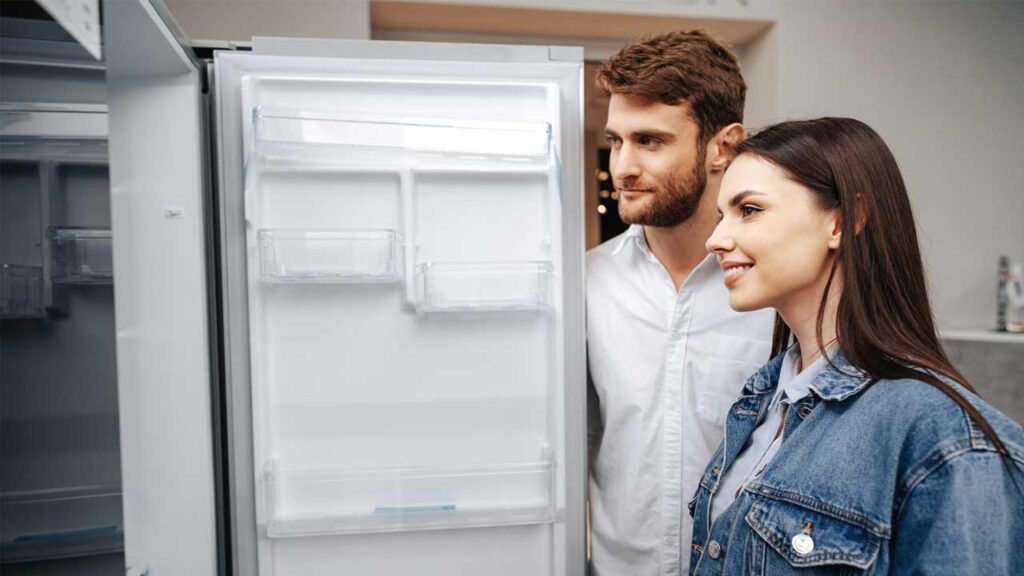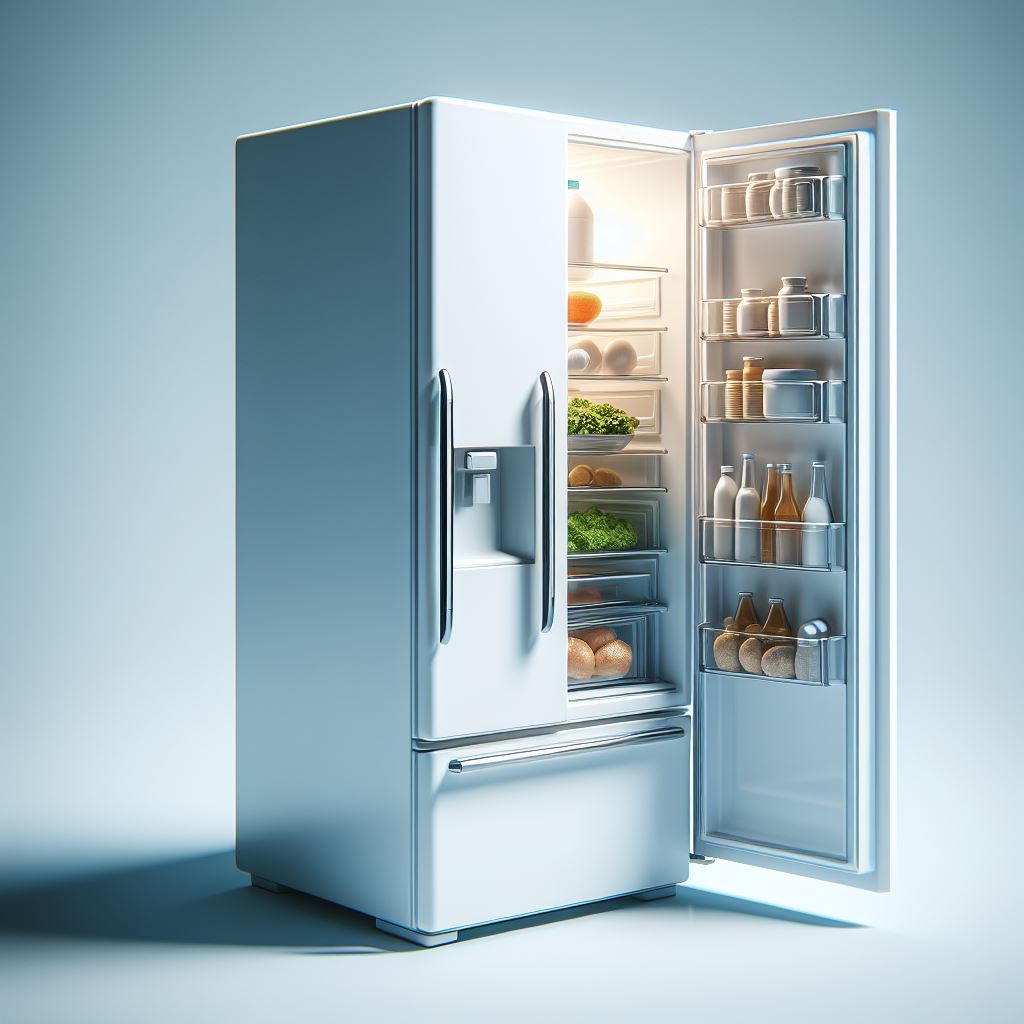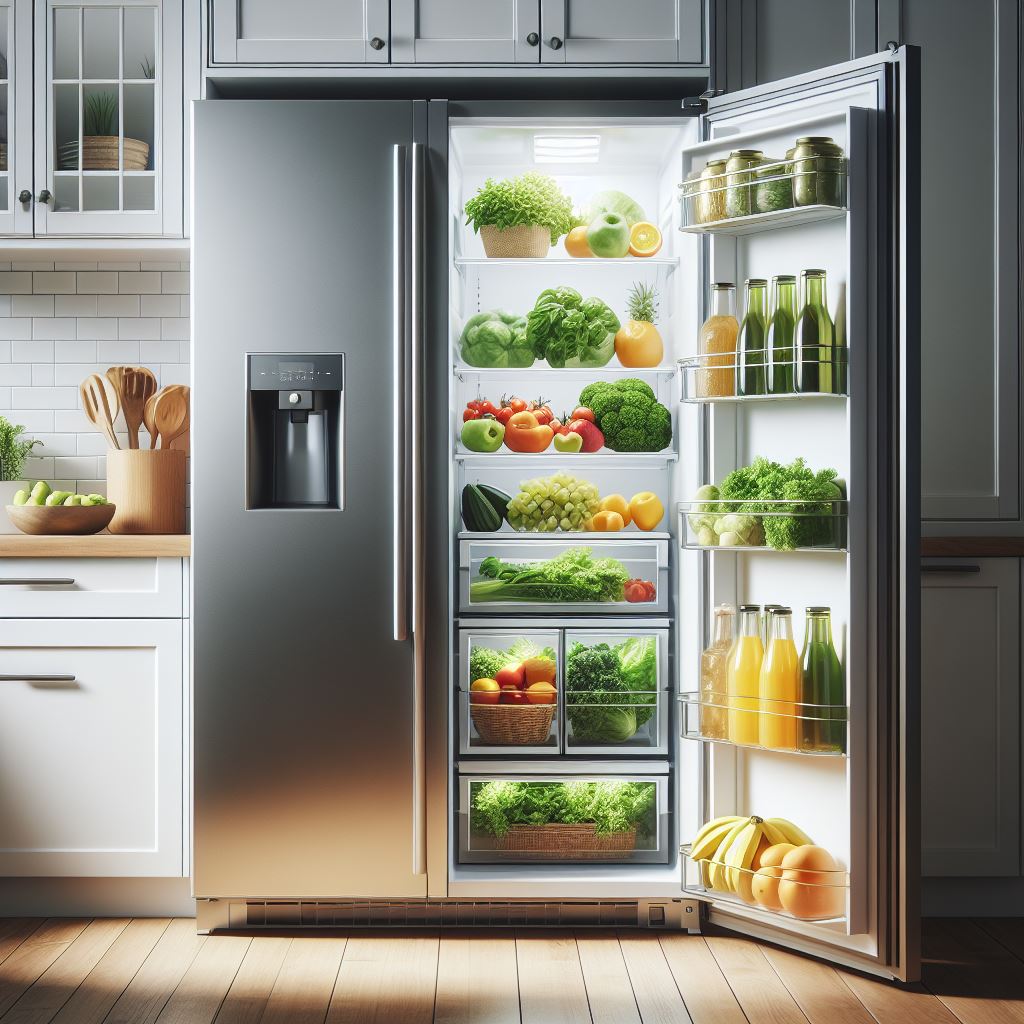Propane refrigerators are a type of refrigerators that use propane gas as their main source of power. They are also known as gas refrigerators or absorption refrigerators. They are different from conventional electric refrigerators that use compressors and refrigerant gases to create a cooling effect. Propane refrigerators use a combination of heat, water, ammonia, and hydrogen gas to achieve the same result.
In this article, you will learn:
- The basics of propane refrigeration
- The advantages and disadvantages of propane refrigerators
- How to Choose a Propane Refrigerator?
- How to Install a Propane Refrigerator?
- The specific considerations for ventilation and maintenance
- The frequently asked questions about propane refrigerators
The Basics of Propane Refrigeration
The working principle of a propane refrigerator is based on the process of absorption refrigeration. This process involves three main stages: absorption, desorption, and condensation.
Absorption
The cycle begins in the absorber, where the ammonia gas (produced in the evaporator) is absorbed back into the water. This creates a weak ammonia-water solution that flows back to the generator.
Desorption
Within the generator, the heat generated by the combustion of propane induces the dissociation of ammonia from water. This is a phenomenon known as desorption. The ammonia gas rises to another chamber, the separator, where it is collected. The water remains in the generator and is reheated by the propane flame.
Condensation
The ammonia gas proceeds to the condenser, where it cools down and becomes a liquid. The liquid ammonia then flows into the evaporator, where it mixes with hydrogen gas. The hydrogen gas reduces the pressure in the evaporator, allowing the liquid ammonia to evaporate rapidly. This causes a cooling effect that is transferred to the refrigerator box through metal fins or tubes. The ammonia gas then returns to the absorber, where the cycle begins again.
The diagram below illustrates the absorption refrigeration cycle:
The Advantages and Disadvantages of Propane Refrigerators
Propane refrigerators have several notable advantages and disadvantages compared to electric refrigerators. Here are some of them:
Advantages
- No electricity required: Propane refrigerators do not need electricity to operate, making them ideal for off-grid living or areas with unreliable power supply. They can run on propane tanks or cylinders that are widely available and affordable.
- Energy-efficient: Propane refrigerators use very little fuel to produce a lot of cooling power. A typical propane refrigerator can run for several weeks on a single 20-pound propane tank.
- Environmentally-friendly: Propane refrigerators do not produce any harmful emissions or greenhouse gases, unlike electric refrigerators that use Freon or other synthetic refrigerants. Propane is also a renewable and clean-burning fuel source.
- Quiet operation: Propane refrigerators do not have any moving parts or noisy compressors, making them very quiet and peaceful to use.
Disadvantages
- High initial cost: Propane refrigerators are more expensive than electric refrigerators upfront, as they require special installation and ventilation. They also need regular maintenance and cleaning to ensure optimal performance.
- Limited size and design options: Propane refrigerators are usually smaller and less stylish than electric refrigerators, as they have less space for storage and features. They also have fewer models and brands to choose from in the market.
- Safety risks: Propane refrigerators pose some safety risks if not handled properly. They can cause fire hazards if there are leaks or spills in the propane system. They can also emit carbon monoxide if there is incomplete combustion or poor ventilation.
How to Choose a Propane Refrigerator?
If you decide to buy a propane refrigerator, there are some factors that you should consider before making your purchase, such as:
- Size: You should choose a size that suits your needs and space availability. Propane refrigerators come in various sizes, ranging from small portable units to large household models. You should also consider how much food you need to store and how often you need to access it.
- Features: You should look for features that enhance your convenience and comfort, such as automatic ignition, thermostat control, interior lighting, door lock, reversible door hinge, freezer compartment, ice maker, etc.
- Quality: You should look for quality brands that have good reviews and ratings from customers and experts. You should also check the warranty and service options offered by the manufacturer or seller.
- Price: You should compare prices from different sources and look for discounts or deals that can save you money. You should also factor in the cost of installation and maintenance when calculating your budget.
How to Install a Propane Refrigerator?
Installing a propane refrigerator requires some skill and knowledge, so it is best to hire a professional to do it for you. However, if you want to do it yourself, you should follow these steps:
- Level the floor under the refrigerator before you set it in place. Use a carpenter’s level or a bubble level to check the alignment and adjust the legs or feet of the fridge as needed.
- Wrap plumbing tape around the threads of the gas valve in your house, or to the outlet valve on a propane tank, and screw one end of a flexible gas hose to it. Make sure the hose is long enough to reach the fridge without kinking or twisting.
- Connect the other end of the hose to the gas inlet on the back of the fridge, using a wrench to tighten the fittings. Check for leaks by applying soapy water to the joints and looking for bubbles. If you see any bubbles, turn off the gas and tighten the fittings more.
- Plug in the power cord of the fridge to an electrical outlet, if it has one. Some propane fridges have electric igniters or fans that need electricity to work. If your fridge does not have a power cord, you can skip this step.
- Turn on the gas valve and light the pilot flame on the fridge, following the instructions on the manual or label. Adjust the flame size and temperature settings according to your preference.
- Wait for a few hours for the fridge to cool down before loading it with food. Check the temperature regularly and make any necessary adjustments.
The Specific Considerations for Ventilation and Maintenance
Propane refrigerators require proper ventilation and maintenance to function safely and efficiently. Here are some specific considerations to keep in mind:
Ventilation
Propane refrigerators need adequate ventilation to prevent overheating and carbon monoxide poisoning. Ventilation can be achieved by installing vents or fans in the wall or roof near the refrigerator. The vents or fans should be large enough to allow sufficient airflow and prevent any obstructions. The refrigerator should also be placed away from any heat sources or flammable materials.
Maintenance
Propane refrigerators need regular maintenance and cleaning to prevent clogging and corrosion in the system. Maintenance can be done by following these steps:
- Check the propane tank or cylinder for leaks or damage every month. Replace it if necessary.
- Clean the burner assembly and flue pipe every six months using a soft brush or compressed air. Remove any dust, dirt, or spider webs that may affect the flame quality.
- Level the refrigerator every year using a bubble level or a carpenter’s level. Adjust the legs or shims as needed to ensure that the refrigerator is balanced and stable.
- Inspect the seals and gaskets on the doors every year for cracks or wear. Replace them if necessary.
- Defrost the refrigerator every month or as needed by turning off the gas valve and unplugging the power cord. Remove any ice or frost from the freezer and refrigerator compartments using a plastic scraper or cloth. Do not use any sharp objects or hot water to avoid damaging the refrigerator.
Frequently Asked Questions About Propane Refrigerators
Here are some common questions and answers about propane refrigerators that you may find helpful:
Q: How much propane does a refrigerator use?
A: The amount of propane that a refrigerator uses depends on several factors, such as its size, model, settings, usage, and ambient conditions. However, a general estimate is that a standard-size propane fridge uses about 1.5 pounds of propane per day.
Q: How long does a propane refrigerator last?
A: A propane refrigerator can last for many years if it is well maintained and used properly. Some models can last for up to 20 years or more.
Q: Can I use a propane refrigerator indoors?
A: Yes, you can use a propane refrigerator indoors, as long as you follow some safety precautions. You should install it in a well-ventilated area, away from any sources of ignition or heat. You should also install a carbon monoxide detector near the fridge, as propane combustion can produce this harmful gas.
Q: Can I convert an electric refrigerator to a propane refrigerator?
A: No, you cannot convert an electric refrigerator to a propane refrigerator, as they have different mechanisms and components. You will need to buy a new propane refrigerator if you want to switch to a propane refrigerator. Propane refrigerators have a different cooling system that involves a heat source, a refrigerant, and an absorber. Electric refrigerators use a compressor, a refrigerant, and a condenser to create cold air. These two systems are not compatible and cannot be interchanged.
Q: How long does a 20-pound propane tank run a refrigerator?
Generally speaking, a 20-pound propane tank will run a standard-size refrigerator for approximately 11 days. And that’s running your fridge non-stop. If you open the fridge door a lot, or if it’s particularly hot outside, your propane will run out faster. Of course, this is just a rough estimate. The actual duration will depend on the size and model of your refrigerator, the ambient temperature, and your usage habits.
Q: How do I light a propane refrigerator?
To light a propane refrigerator, you need to follow these steps:
- Turn off the gas valve and unplug the power cord from the wall outlet.
- Open the access panel at the back of the refrigerator and locate the burner assembly and the igniter button.
- Turn the gas valve to the pilot position and press and hold it for 10 seconds.
- Press the igniter button repeatedly until you see a blue flame in the burner assembly.
- Release the gas valve and check if the flame stays on. If not, repeat steps 3 and 4 until it does.
- Turn the gas valve to the desired temperature setting and close the access panel.
- Plug in the power cord to the wall outlet and turn on the refrigerator.
Q: How do I adjust the temperature of a propane refrigerator?
To adjust the temperature of a propane refrigerator, you need to turn the gas valve to a higher or lower setting. The higher the setting, the colder the refrigerator will be. The lower the setting, the warmer it will be. You can also use a thermometer to monitor the temperature inside the refrigerator and freezer compartments.
Q: Can I use a propane refrigerator indoors?
Yes, you can use a propane refrigerator indoors as long as you have proper ventilation and installation. You need to have vents or fans in the wall or roof near the refrigerator to allow fresh air to enter and exhaust gases to exit. You also need to have a qualified technician to install and service your propane refrigerator according to the manufacturer’s instructions and local codes.
Q: What are some of the best brands of propane refrigerators?
Some of the best brands of propane refrigerators are:
- EZ Freeze: EZ Freeze is a leading manufacturer of high-quality and durable propane refrigerators. They offer various sizes and models to suit different needs and preferences. They also have a patented cooling system that ensures consistent and reliable performance.
- Unique: Unique is another reputable brand of propane refrigerators that offers innovative and eco-friendly products. They have a range of models that feature modern designs, digital controls, LED lights, and reversible doors.
- Dometic: Dometic is a well-known brand of RV appliances that also produces propane refrigerators for off-grid living. They have compact and portable models that are ideal for small spaces and outdoor adventures.
Propane refrigerators are a great option for anyone who wants to enjoy cold food and drinks without relying on electricity. They are energy-efficient, environmentally-friendly, and quiet to operate. They also have some drawbacks, such as high initial cost, limited size and design options, and safety risks. However, with proper ventilation and maintenance, propane refrigerators can provide years of service and satisfaction.







